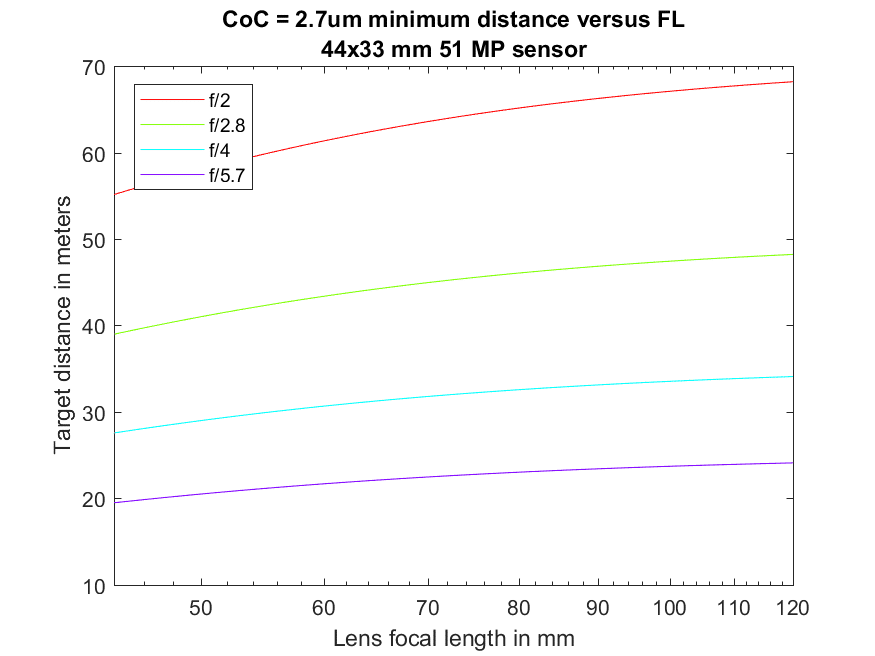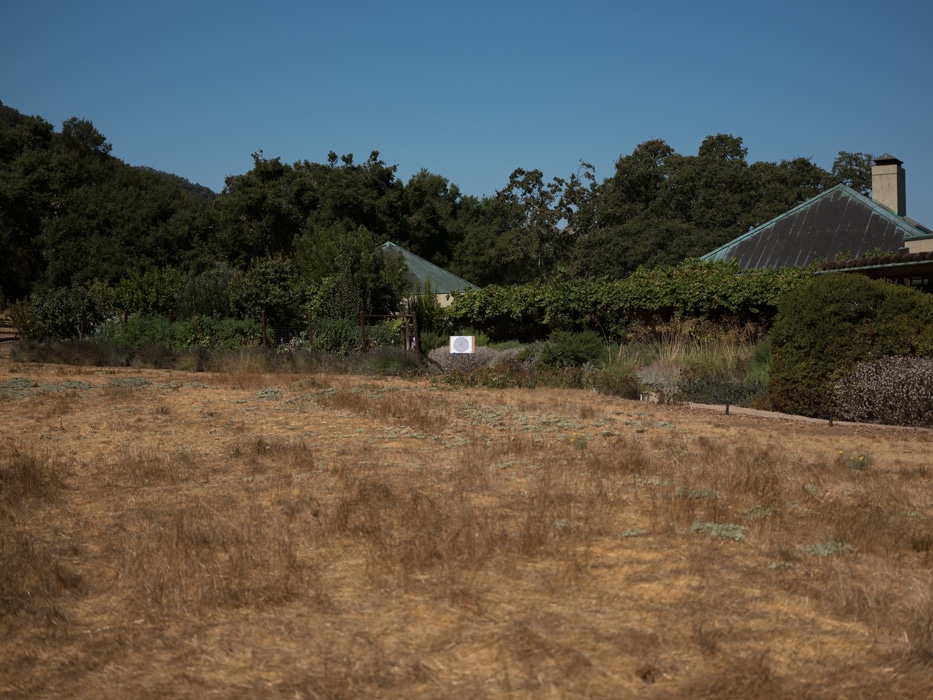On this page, I’ll walk you through a test of a Fuji 63mm lens on a Fujifilm GFX 50S body. The lens turns out to be properly assembled.
We want to test the lens wide open. We consult the minimum distance chart:
With a 63 mm lens, we need to be about 43 meters at f/2.8.
Checking for target size:
A 16 inch star will be about 100 pixels on the sensor at the minimum distance. 150 is better, so I used a 22.5 inch Siemens Star for my target.
I backed up 48 meters, and underexposed to make sure the target background didn’t clip.
In the center, magnified three or four times:
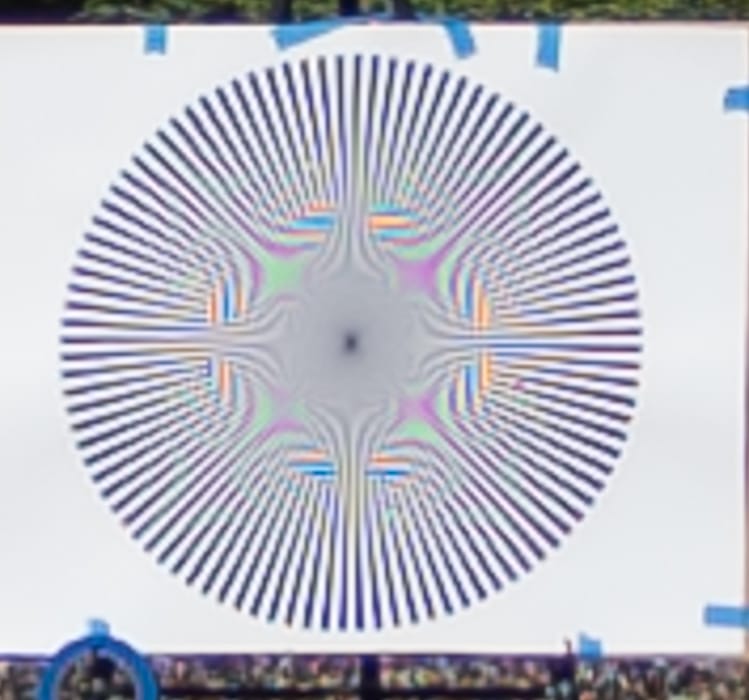
There is a lot of aliasing and false color, indicating good focusing. I used my GFX magnified peaking technique, and as usual, it worked like a charm. I did make a couple of series that were focused with peaking turned off. They were, at least by comparison, awful. If we consider the images in opposite pairs we can look for differences that aren’t radially symmetric. If sufficiently bad, these departures from symmetry are indicators of improper assembly.
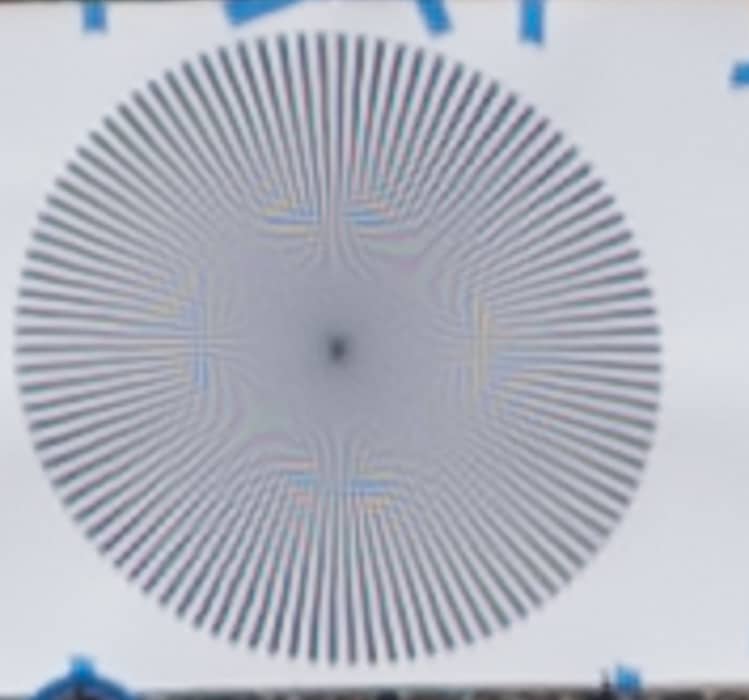
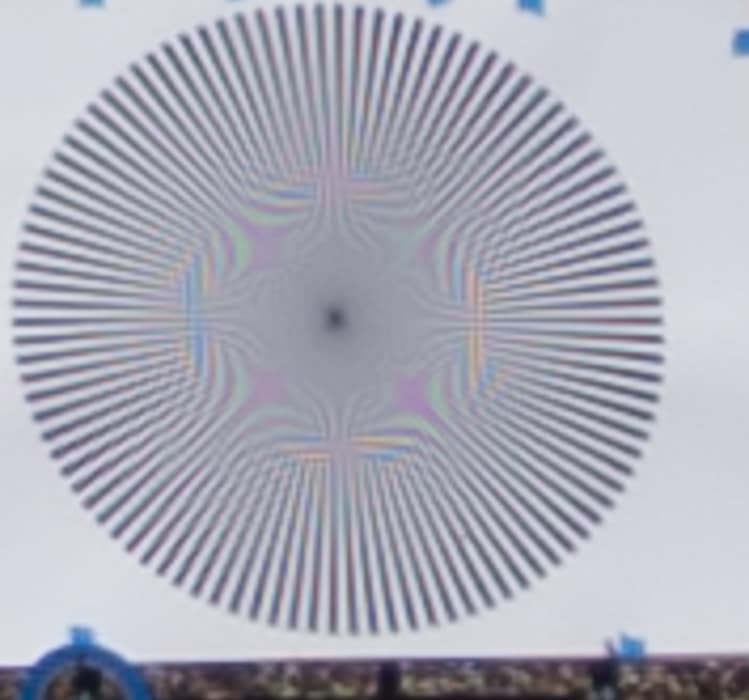
These are quite a bit less contrasty than the center. The lower right is sharper, although both are sharp enough to show aliasing.
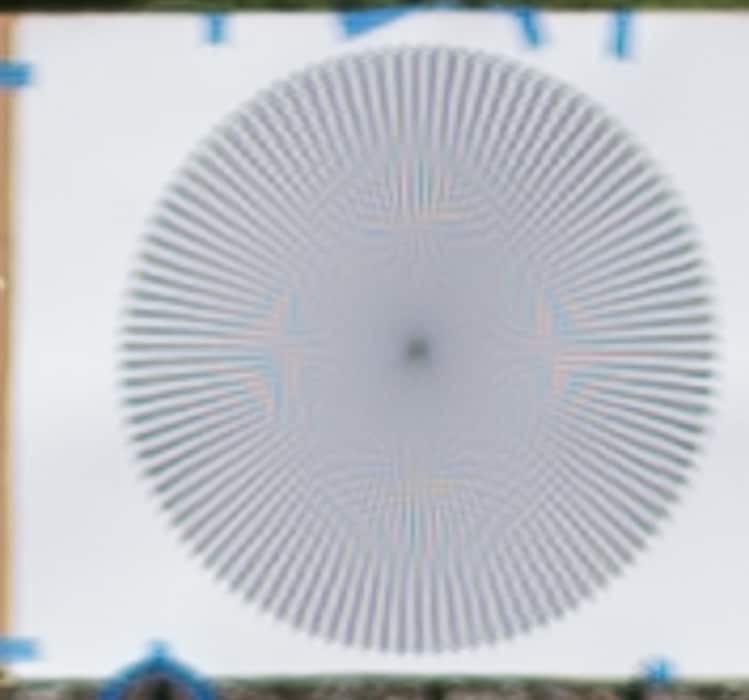

The bottom is sharper than the top.
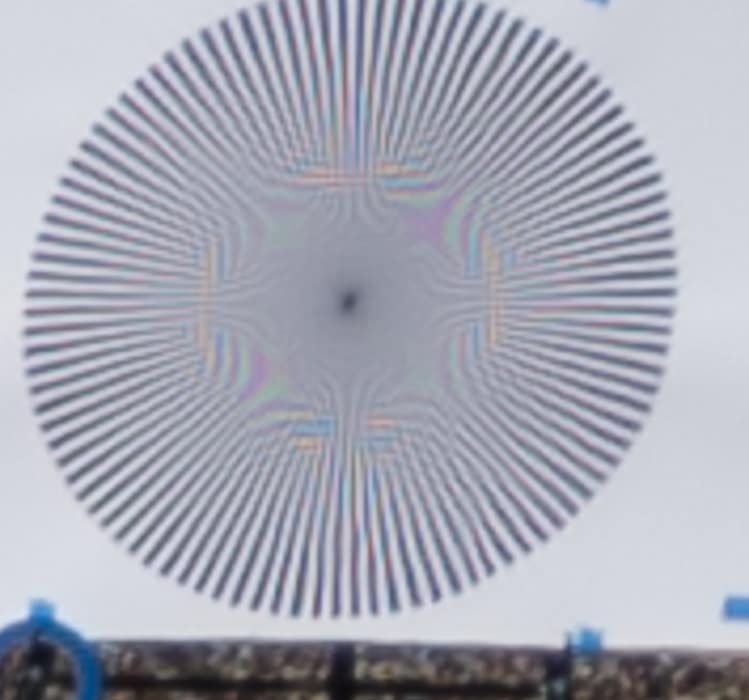
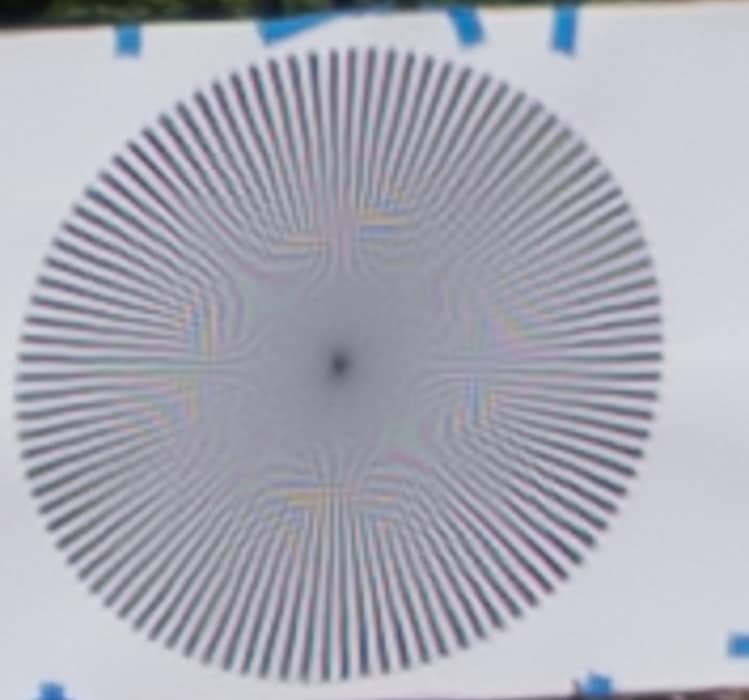
These are about the same, with the top actually being slightly sharper.
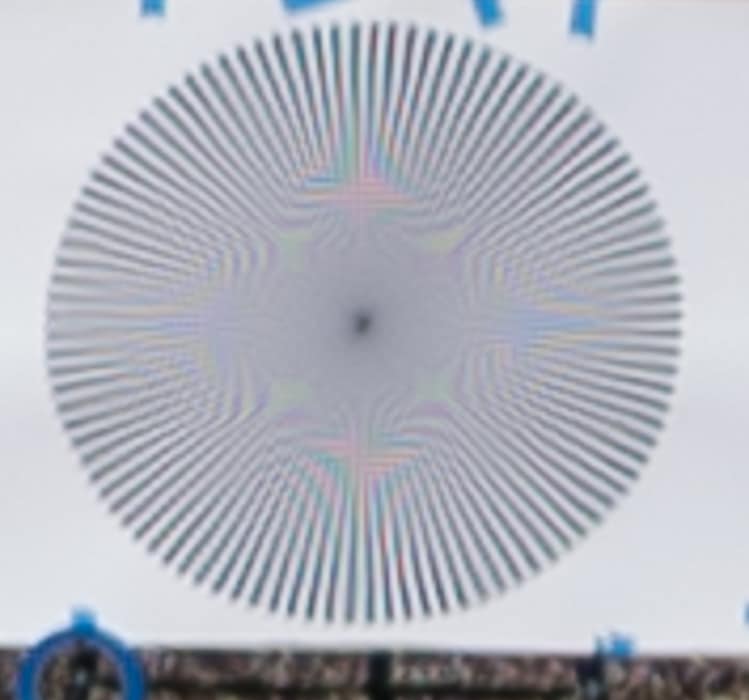
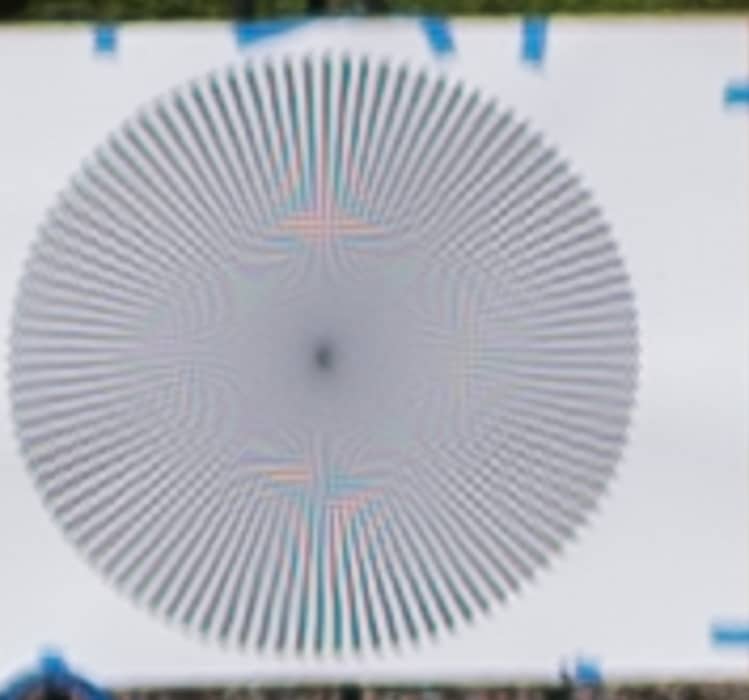
The right is slightly sharper than the left.
There is not a pattern here that makes me think that there’s an alignment error worth worrying about, and we’ve got enough sharpness to cause aliasing even with the softest crops, so I’m calling this a good lens.
F/2.8 is not the 63 mm Fuji’s sharpest stop. Let’s runs through a series at f/4.
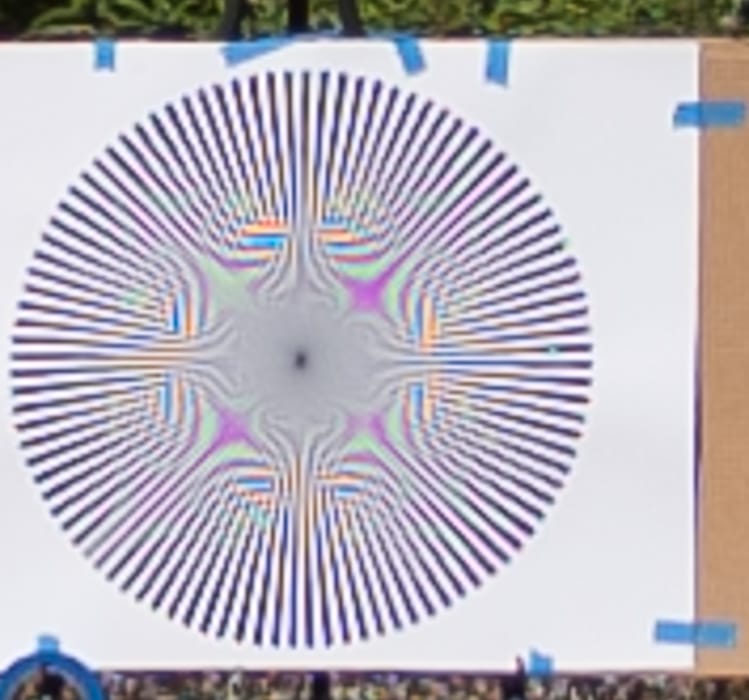
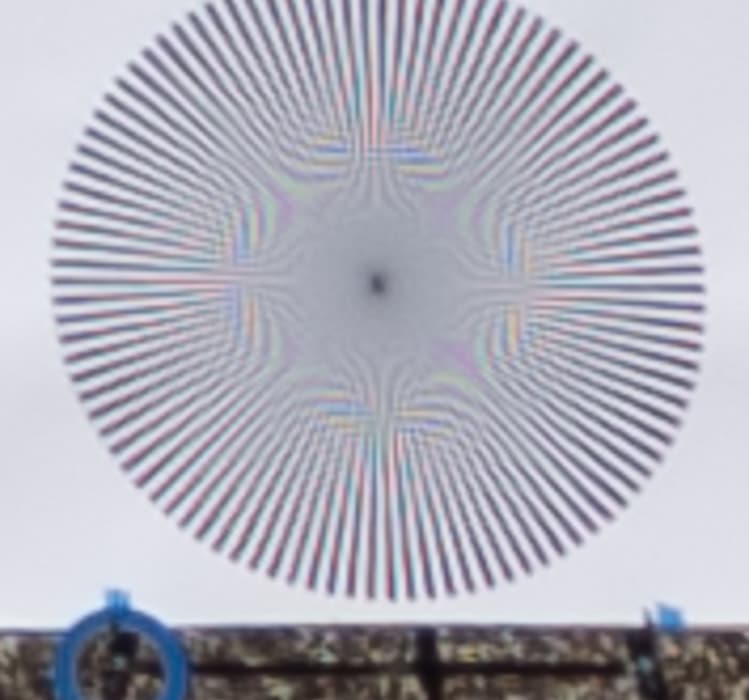
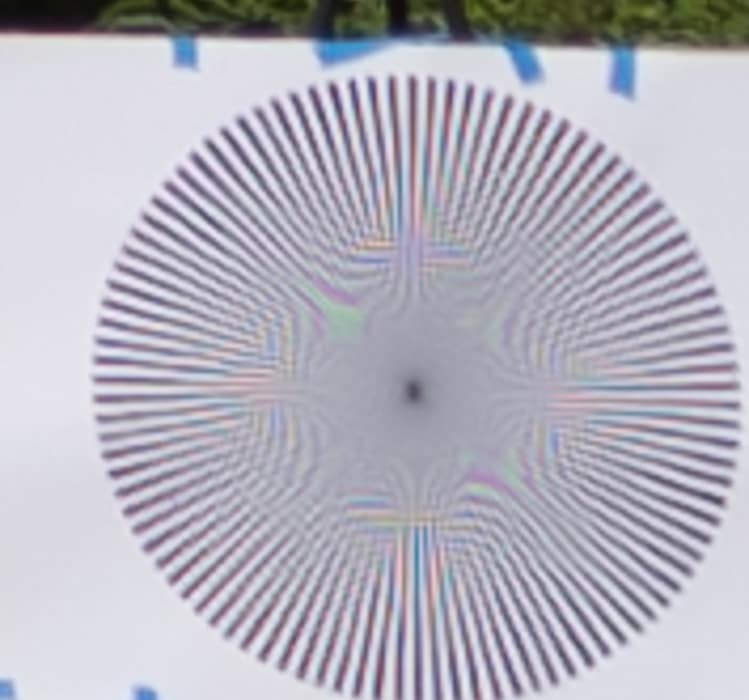
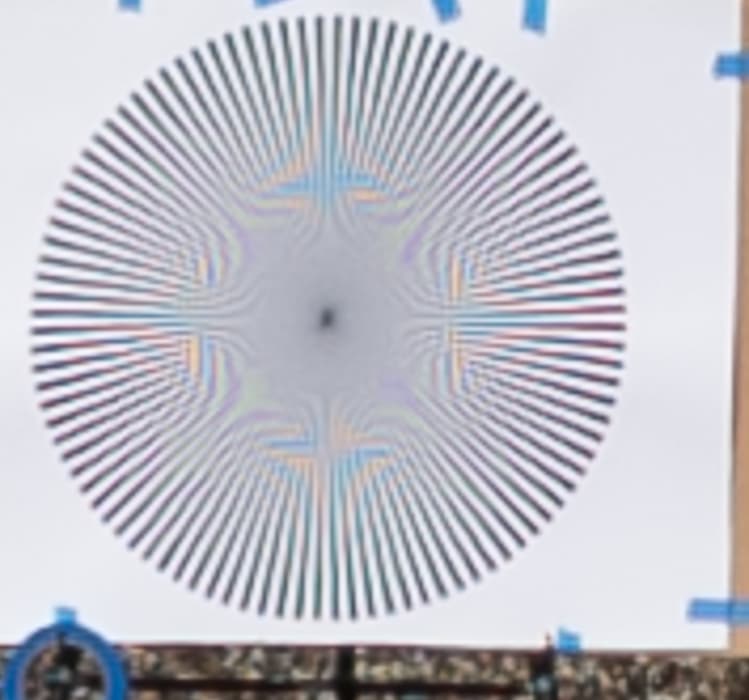
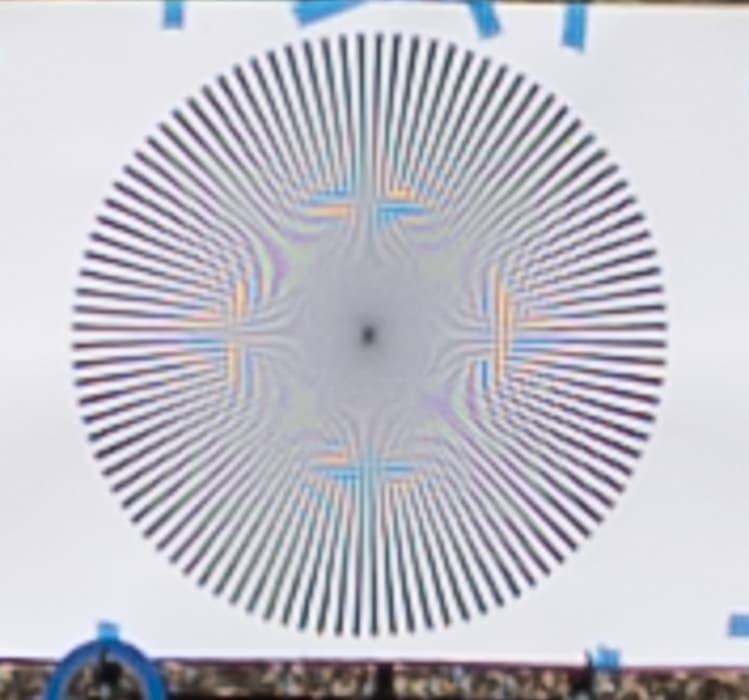
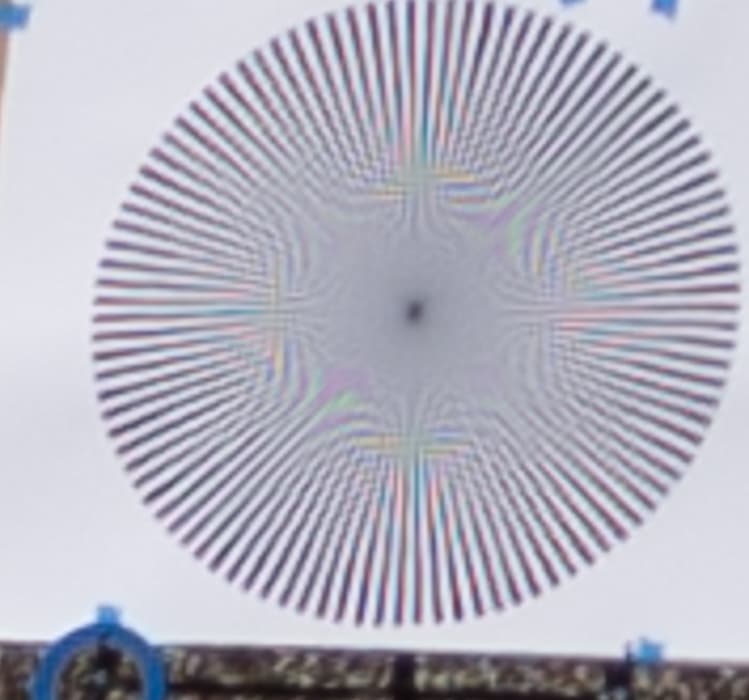
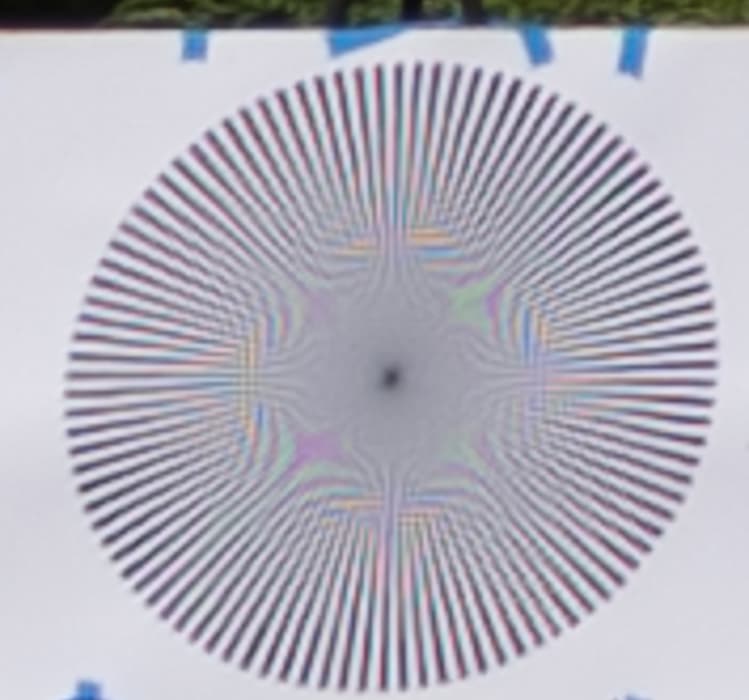
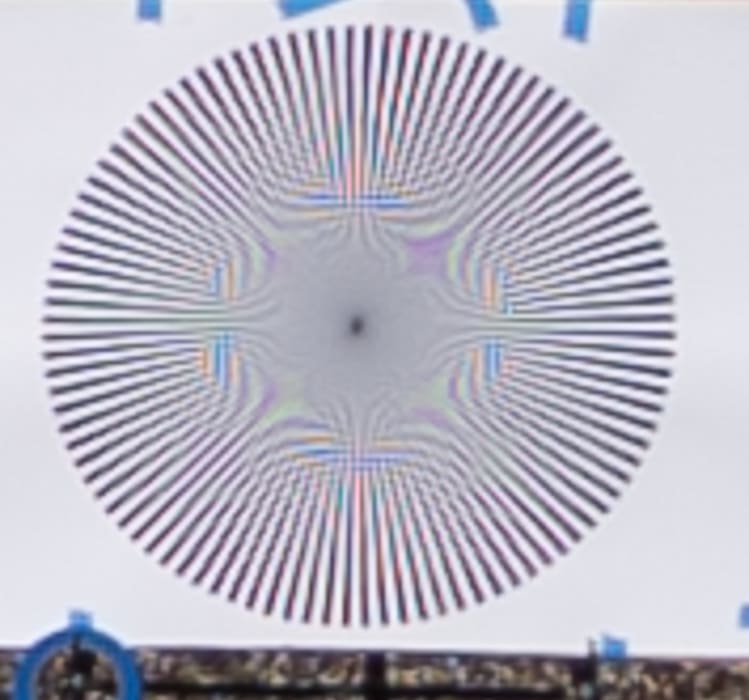
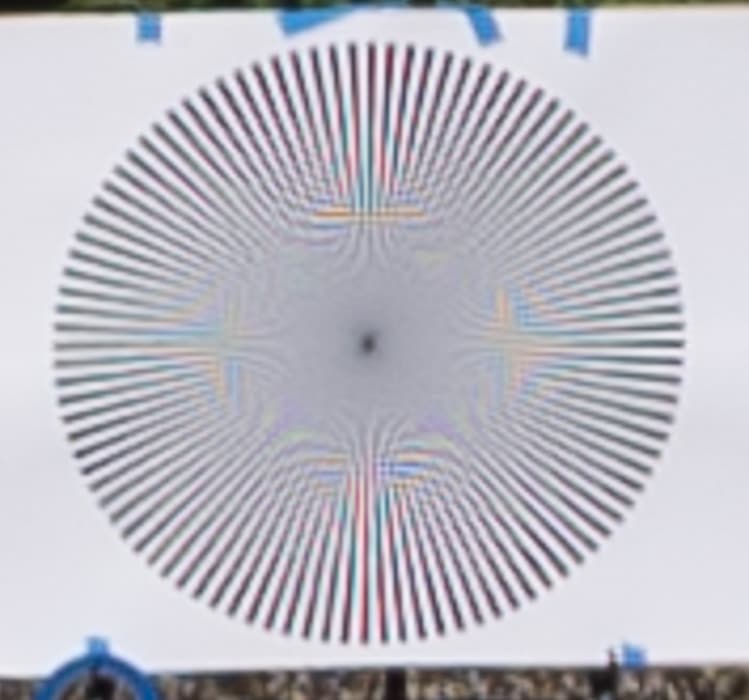
The differences are smaller. Based on this and a few other tests, my conclusion is that you should test lenses for assembly errors wide open if you can, even if they’re not the sharpest these. I suppose there are some lenses that are so soft wide open that that’s not going to be the best plan, but based on a few good lenses, it seems to be the way to go.
